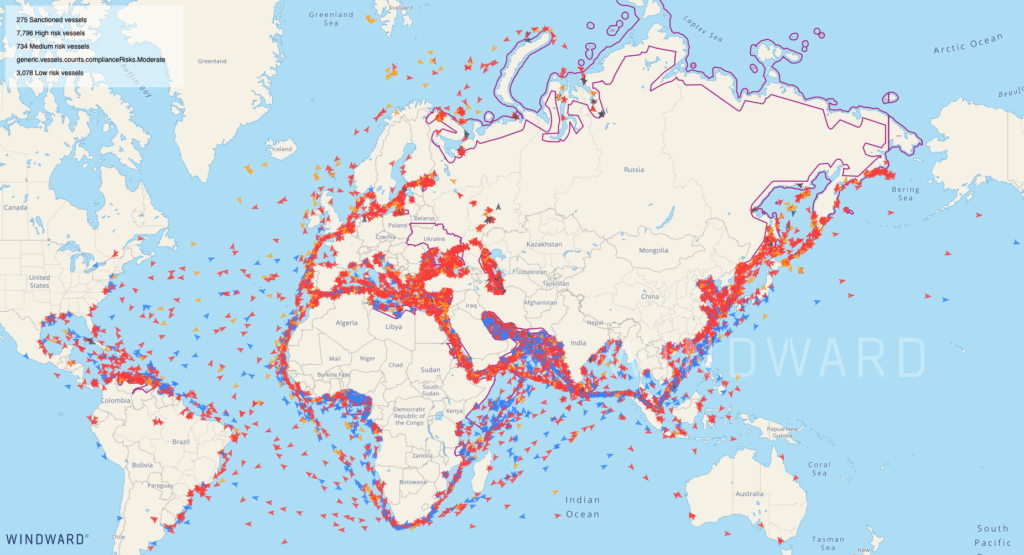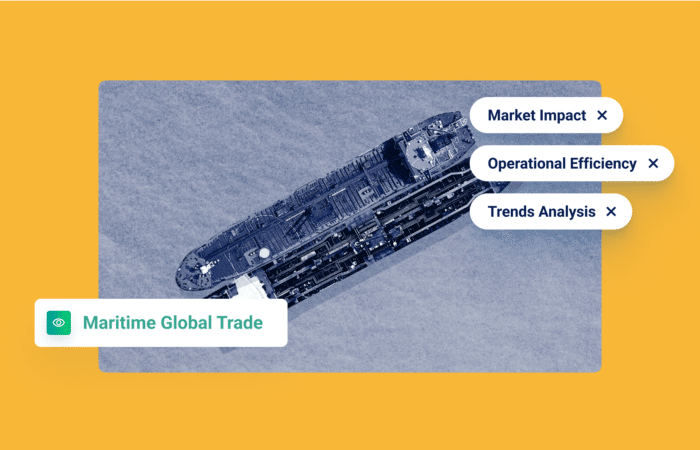What’s inside?
Maritime insurers have a lot at stake…vessels and cargo can obviously involve huge sums of money. It is nearly impossible to effectively do business – contract negotiation, identifying new opportunities, etc. – without possessing immediate and intricate knowledge of new deceptive shipping practices (DSPs) and the latest geopolitical tensions. .
April saw a major Iran attack on Israel, the seizing of the Portuguese-flagged cargo ship, MSC Aries, and more Houthi disruptions – plus the ongoing Russia-Ukraine conflict and more military drills and tension in the South China Sea. In addition, the Iranian Navy has begun escorting Iranian commercial ships in the Red Sea.
Despite the difficulties, the shipping show must go on. 12,367 vessels made 51,930 area visits in war risk areas worldwide in April 2024. Most area visits were by cargo vessels (45%), tankers (25%), service (21%), or fishing vessels (6%). Less than 1% of the visits were by military or law enforcement vessels, as detailed in our NEW Commercial Activity at a Time of Conflict: Global Trade Report.

Being in a state of active conflict does not necessarily mean a halt in the movement of goods or ongoing commerce activities in these areas. Despite the heightened risk, commercial vessels inevitably continue to sail through, putting insured vessels and cargo at potentially higher risk, and requiring much more expensive premiums and coverages.
The Loadstar noted in February 2024:
“War-risk premiums may have increased by as much as 900% since the Houthi attacks on shipping in the Red Sea began.
This is one of several troubling predictions in a United Nations Conference on Trade and Development (UNCTAD) report released yesterday.
UNCTAD said that, according to some sources, from below a level of 0.1% of the value of a vessel, during the final weeks of last year, war-risk premiums had jumped to as much as 1% of vessel value by the start of this month.”
Additionally, war zones shift suddenly. Few anticipated that Russia would actually invade Ukraine, or that the Houthis would disrupt the Red Sea (and beyond) for months on end. Industry experts claim that the war risk market has gotten five times larger in just three years! Global conflagrations have highlighted the need to have full visibility into war risk zones and areas…
Introducing Windward’s NEW War Risk Areas Layer
The Red Sea disruptions and the Russia-Ukraine war and its accompanying sanctions have highlighted the need to have full visibility for war-risk areas. To help, Windward recently released a new war risk areas layer, to ensure our users have better visibility into these evolving areas, the relevant breaches, and DSPs taking place.
This is a query-able search engine layer, based on the Joint War Committee, that offers industry-best visibility into 17 evolving war risk areas around the world.
Business Benefits for Insurance Companies & Brokers
This new capability offers better visibility into evolving war risk areas, as well as relevant breaches and DSPs within the zone, all in a single workflow. It also supplies real-time monitoring of vessels about to enter war risk areas.
Insurance companies and brokers can use the Windward Maritime AI™ platform and this new capability to:
- Go beyond rule-based evaluations with predictive behavioral insights and war risk area movements to accurately determine premiums and new contracts
- Assess vessels’ historical behavior to accurately predict potential risk exposure
- Monitor existing contracts, investigate claims, and efficiently complete underwriting audits
- Automatically generate new leads by searching historical war risk area visits to better target which organizations to reach out to – by adding pricing to the historical visits, insurers and brokers can better understand potential value and act in a more focused manner
Actuaries really know what they’re doing and some have excellent models. But no human beings – and not many existing technology systems – can adequately keep up with the quickly evolving war areas.
Windward’s algorithms and human data scientists have already succeeded in giving insurers the uplift that comes with understanding each ship’s operational performance. This means our risk modeling can assist underwriters in adjusting premiums and enable vessel-owners to mitigate losses by leveraging advanced AI models and predictive risk insights.
Now we’ve gone beyond. Insurers and brokers require predictability, which requires visibility into maritime war zones. Obtaining this visibility shouldn’t be a battle…














